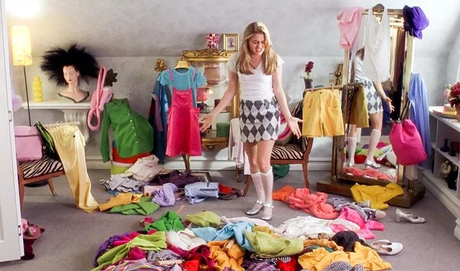It’s official – fast fashion is dying! Fashion enthusiasts all over are calling for an upheaval of poisonous and insidious practices. It is well known that the fashion industry has one of the largest negative impacts on the environment. It is reported that after big oil and agriculture, fast fashion is the third most pollutant industry in the world. People want to make a change.
In recent years, Google searches for terms such as sustainable fashion and ethical fashion have increased by approximately 46%. Consumers and industry leaders alike are appalled by the effects that the fashion industry has on the environment (and the people who make our clothes). Just this past season, designers such as Maria Cornejo, Tory Burch, Collina Strada, and even automobile brand Hyundai made strides towards sustainable designs and updated practices by reusing and upcycling materials in an attempt at zero-waste processes.
Massive fast fashion brands such as Fashion Nova and Pretty Little Thing are under scrutiny for their questionable, unethical and harmful behaviors such as the use of sweatshop labor, underpaid employees, and harmful chemicals used to develop clothing within a hyperspeed turnaround time.
As a consumer, I am sure you are thinking about what you can do to participate in the fashion industry as you usually do while having a positive effect on the environment. Here are some tips on how you can shop and update your wardrobe without feeling guilty about your fashion footprint.

Order online more than shopping in the store
By ordering online and choosing standard shipping (as opposed to express shipping), your fashion footprint is massively decreased.
According to a Carbon study commissioned by independent research firm, Green Story Inc, “Shopping online has, on average, a 60% lower carbon impact than shopping in-store. Nearly 85% of in-store’s impact comes from driving there. Choosing standard shipping reduces carbon by 50%.”

Purchase second-hand more often
While shopping second hand and vintage has been touted by the cool kids of fashion as the only way to have a unique sense of style, it turns out that the tried and practice of thrift shop scrounging is actually good for your wardrobe AND the environment. “By choosing used over new, you reduce your carbon footprint by 60-70%. This is because you are eliminating the harmful carbon emitted when producing a new garment.”
Surprisingly, some pieces have more of an environmental impact than others. According to author Stephen Leahy’s “Your Water Footprint: The Shocking Facts About How Much Water We Use to Make Everyday Products,” it takes 2,000 gallons of water to make your favorite pair of jeans. So your vintage mom jeans are doing more than just making your legs look great. “Jeans have 4-5 times the carbon impact of a T-shirt, based on the weight of the fabric required. Buy these items secondhand to cut the most carbon.”

Try gifting or repurposing unwanted items instead of returning them
Whenever I do not like an item, I send a photo to my group chat(s) to see if anyone wants it. Between my BFF group and my work group chats, there’s always someone to give unwanted items to. This practice helps cut back on landfill waste. “Only 50% of returned garments are restocked by traditional retailers, and a staggering 25% of them end up in a landfill.”
Pro Tip: When I do not like the way an item fits me, I take it to my tailor to see if he can transform it into something I will love! i.e., A dress that I ordered online was very unflattering on me, but he turned it into the most adorable skirt with a matching purse!
Shop from sustainable brands
Of course, we cannot always buy secondhand, so several brands are making it easier for us to have access to clothing that is ethically created and sourced. A few sustainable brands are Reformation, Everlane, Patagonia, Sézane, and Eileen Fisher, amongst many others.
“Designing garments using sustainable fabrics instead of conventional reduces carbon emissions by about 30%.”
While 71% of global emissions are contributed to large corporations and companies, we as consumers (although on a much smaller scale) can do our part wherever possible.












